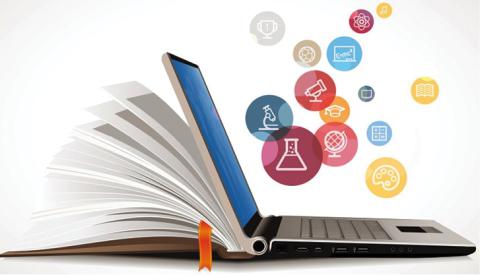Attention quickly shifts to federal and state ministries of education for policy and action when changes required to improve the sector are imminent. While the buck on many matters stop on the desks of the minister and commissioners of education, a major change such as digital transformation in education falls at the intersection of ministries.
In addition, last week our editorial focused on the financing gap preventing low-and-lower-middle-income countries from meeting their national sustainable development goal four (SDG4) benchmarks and the cost assumption were laid bare. As the assumptions have made clear, the model focuses on the essential needs for low-and lower-middle-income countries to accelerate their progress and set them on course to achieving SDG 4.
Arguably, this is not enough as the world is changing rapidly. Digital transformation is one of the additional demands that education systems need to engage with. But there are formidable cost implications and real trade-offs facing governments and development agencies.
The UNESCO Global Education Monitoring Policy Paper 49 titled ‘Can countries afford their national SDG benchmarks?’ estimates that it would cost $183 billion, 2023 – 2030, to prepare schools in low-and-lower-middle-income countries for digital education.
Education technology has been evolving rapidly, at a pace which only accelerated during the COVID-19 pandemic, digital learning and transformation featured as one of the Transforming Education Summit five thematic action tracks in September 2022.
Governments all around the world want to be a part of the economic and social transformations that new technologies are bringing about, and many of them think they can overcome some of the obstacles that have impeded their progress in the past. A crucial current policy challenge is working out the costs associated with advancing digital transformation in education, as well as whether components are transformational.
Estimates differ depending on the things being costed, the unit costs used, and the time frame over which expenditures are anticipated to pay off. One estimate found that a total of $1.4 trillion would be required, with each of the four components accounting for roughly one quarter of the overall cost. This estimate considers the capital costs of ensuring universal access to electricity, internet connectivity, and affordable data usage, as well as the ongoing costs of digital learning over a ten-year period (UNICEF, 2021).
The 2023 Global Education Monitoring Report on technology and education will be revisiting these estimates, examining the cost implications of three alternative scenarios in increasing order of cost: a basic offline approach with solar-powered schools and no connectivity, a fully connected schools approach and a fully connected schools and homes approach. Each scenario involves capital and recurrent spending.
The second approach involves all schools being connected to the electricity grid and to the internet, while students and teachers share school devices and tailored digital learning takes place in schools. Assuming a unit cost of $15,000 to introduce internet to each unconnected school (USD 35 billion); the cost of connecting schools to the grid ($35 billion), a unit cost of $300 to ensure all teachers and one in five students have access to a device ($70 billion) and a range of digital learning set-up costs (from upskilling teachers to data services for schools) ($ 43 billion), it would cost $ 183 billion for the foundations for digital transformation in low-and-lower-middle-income countries.
How such a capital investment cost would be spread over time is an important policy decision. Most of this investment would not come out of education ministry budgets but out of the budgets of other infrastructure-oriented ministries.
Still, assuming it is spread over the period of eight years between 2023 and 2030, it would add $23 billion per year or almost a quarter to the financing gap estimated in this paper for achieving national SDG 4 targets. For any government, this presents a difficult set of choices when stacked against deficits in teachers, teacher support, teaching and learning materials and other essential inputs to the education process.
Digital transformation in Nigeria’s education sector
Digital transformation in education or the adoption and use of education technologies in Nigeria has been slow, especially for government-owned schools, which have infrastructure problems such as shortage of classrooms and teacher-student ratio to deal with.
This means making available basic digital tech devices to enhance teaching and learning is out of reach. Some private schools are leading pioneers of digital transformation, especially for administrators that understand how important it is to yield desirable output. Examples of such can be found in top cities across Nigeria.
Education technology is the combined use of computer hardware, software and educational theory and practice to facilitate learning. It creates, uses and manages technological processes and educational resources to help improve academic performance. There are new technological tools which can be integrated in school’s for efficient and effective school management, and this is a trend every country should adopt in order to achieve their educational goals.
However, the provision of universal access electricity, internet connectivity and affordable data usage are prerequisites to enabling digital transformation in education. This is the point where inter-ministerial collaborations are required among the ministries of education, power, and digital economy.
In 2016, the Federal Government of Nigeria (FGN) launched the Energising Education Programme (EEP) to supply 37 Federal Universities and 7 University Teaching Hospitals across Nigeria with reliable, clean power. This meant building an independent power plant, improving the distribution system, installing street lights to increase campus security, and creating a top-notch renewable energy training facility for each university.
The project is implemented by the Rural Electrification Agency (REA) and developed in phases. Phase one will deliver 28.5 megawatts (MW) to nine Federal Universities and one University Teaching Hospital, using solar hybrid and/or gas-fired captive power plants.
Phase one was fully funded by the FGN, within this phase there are seven solar hybrid projects currently benefitting from funding from the Green Bond issued by the FGN. While subsequent phases are to be funded by the Nigeria Electrification Project which is an FGN project in partnership with the World Bank and African Development Bank.
While the EEP targets federal universities, if offers a model to states that want to improve access to electricity for schools providing basic education. An incentives-based model could be evolved in negotiation with telecommunication companies or other internet service providers to deliver connectivity and have special data usage charges for schools. Achieving means trade-offs for governments and making tough decisions if the pace of digital transformation in education at the elementary level is to quicken, especially in rural areas.







 info@edugist.org
info@edugist.org 






